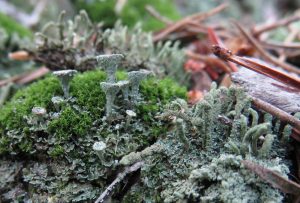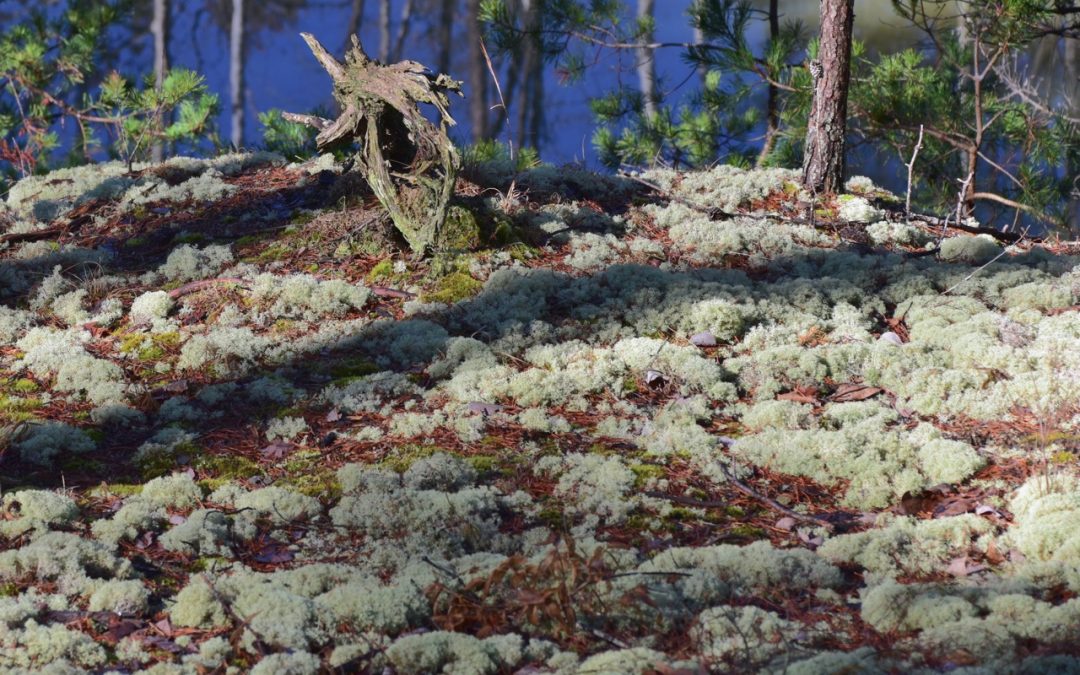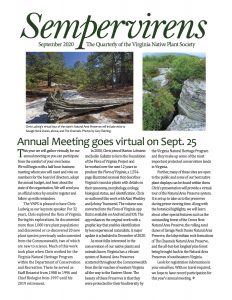The appetites of northern Europe’s reindeer and North America’s caribou give Cladonia rangiferina its economic value—and its common name: Reindeer lichen.
Reindeer lichens grow in northern temperate forests, boreal forests, and even tundra. Here at The Quarry Gardens, C. rangiferina forms a silvery carpet over the north-facing slope above the South Quarry pool, where only a thin layer of soil covers the rock—and where there is very little competition.
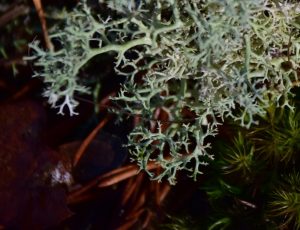
Although its highly branched growth pattern resembles moss—and it is sometimes called Reindeer moss—Reindeer lichen is truly a lichen, a composite organism of fungi and green algae. The relationship is symbiotic: The fungi provides the structure, nutrients, and protection that allow the algae to photosynthesize and produce sugars for the fungi. (Although genetically unrelated, lichens and mosses often appear together in the lousy soils they both tolerate.)
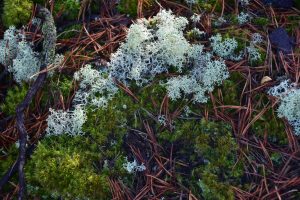
Reindeer lichens are generally latecomers to disturbed forests that have not been burned or logged in at least 40 years. This side of the South Quarry was undisturbed for at least 40 years before we put the trail through, and possibly for much longer, as the quarry access road did not extend so far to the south.
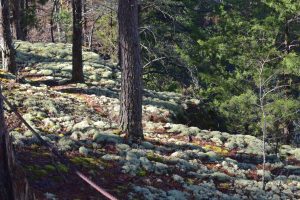
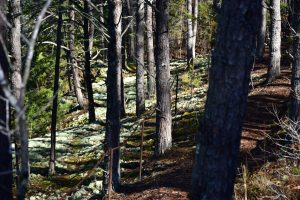
The clumps grow slowly, producing tiny new branches just one-eighth to one-quarter of an inch long per year. The age of a clump can be estimated by counting back through the major branchings along a stem. After about 20 years, the lower parts begin to decompose, so counting can be difficult. Mature clumps—degraded at the center like this one—are often estimated to be 100 years old, or more.
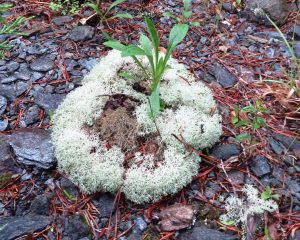
Soft and spongy when wet, brittle and fragile when dry, if overgrazed, burned, or trampled, the lichens may take decades to return. That’s why this slope is designated as a conservation area. Fortunately, unlike reindeer, our local charismatic megafauna have shown no taste for Cladonia rangiferina.
In the same family as Cladonia rangiferina is this Cladonia asahinae, with the apt common name Pixie cup lichen. More widely distributed globally—it also occurs in the southernmost part of South America and in the Antarctic—this cold-hardy lichen has been found growing on mosses near the North Quarry pool.
